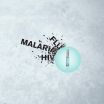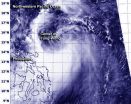(Press-News.org) SAN ANTONIO, September 18, 2014 – New research into the Crimean-Congo hemorrhagic fever virus (CCHFV), a tick-borne virus which causes a severe hemorrhagic disease in humans similar to that caused by Ebolavirus, has identified new cellular factors essential for CCHFV infection. This discovery has the potential to lead to novel targets for therapeutic interventions against the pathogen.
The research, reported in a paper published today in the journal PLoS Pathogens and conducted by scientists at the Texas Biomedical Research Institute and their colleagues, represents a milestone in efforts to develop a treatment for CCHFV, which has a fatality rate approaching 30%.
"This new research is the first to indicate where the virus penetrates into the cell to infect it, revealing the site at which a drug therapy would need to act," said Robert Davey, Ph.D., of the Texas Biomed Department of Virology and Immunology, who led the research.
The virus is endemic to much of Eastern Europe, the Middle East, Asia and Africa, and recent studies have detected CCHFV in ticks collected in Spain, indicating that the virus continues to spread. CCHFV killed a US Army serviceman stationed in Afghanistan in 2009, and was initially mistaken for Ebolavirus.
CCHFV is primarily transmitted to people from ticks and from infected livestock during the slaughtering process, although human-to-human transmission can occur from close contact with blood or other fluids from infected persons. There are no widely accepted therapies available to prevent or treat the disease.
Virus entry into the cell is the first and critical step in the virus replication cycle. To better understand the pathway for infection, researchers sought to identify cell proteins controlling CCHFV transport through the cell. Dr. Olena Shtanko, a postdoctoral scientist in the lab, demonstrated that after passing through early endosomes, membrane-bound vesicles within cells, the virus is delivered to multivesicular bodies which are made from large collections of these vesicles. Findings suggested that these multivesicular bodies are critical for infection by CCHFV, being the sites where the virus first penetrates into the cytoplasm to start replicating and taking over the cell.
"The next step in the process is to now identify drugs that can prevent interaction of the virus with the multivesicular bodies" Davey said.
Several new drug candidates are presently being tested by Shtanko with promising results.
Several other important viruses, like influenza virus (cause of the flu) and Lassa fever virus also use multivesicular bodies to infect cells. The identified drugs have the potential to be developed into broad spectrum antiviral treatments.
INFORMATION:
The research was funded by the Ewing Halsell Foundation, Douglass Foundation and the U.S. Defense Threat Reduction Agency (DTRA). In addition to Davey and Shtanko, co-authors of the PLoS Pathogens article included Raisa Nikitina and Alexander Chepurnov of the Institute for Clinical Immunology in Novosibirsk, Russian Federation, and Cengiz Altuntas of the Texas Institute of Biotechnology Education and Research at the North American University in Houston.
Texas Biomed, formerly the Southwest Foundation for Biomedical Research, is one of the world's leading independent biomedical research institutions dedicated to advancing health worldwide through innovative biomedical research. Located on a 200-acre campus on the northwest side of San Antonio, Texas, the Institute partners with hundreds of researchers and institutions around the world to study the genetics of cardiovascular disease, diabetes, obesity, psychiatric disorders and other diseases, and to develop vaccines and therapeutics against viral pathogens causing AIDS, hepatitis, herpes, Ebola virus and other hemorrhagic fever viruses, and parasitic diseases responsible for malaria, schistosomiasis and Chagas disease. For more information on Texas Biomed, go to http://www.TxBiomed.org.
Research milestone in CCHF virus could help identify new treatments
2014-09-18
ELSE PRESS RELEASES FROM THIS DATE:
Microplastic pollution discovered in St. Lawrence River sediments
2014-09-18
A team of researchers from McGill University and the Quebec government have discovered microplastics (in the form of polyethylene 'microbeads', END ...
A new quality control pathway in the cell
2014-09-18
Proteins are important building blocks in our cells and each cell contains millions of different protein molecules. They are involved in everything from structural to regulatory aspects in the cell. Proteins are constructed as linear molecules but they only become functional once they are folded into specific three-dimensional structures. Several factors, like mutations, stress and age, can interfere with this folding process and induce protein misfolding. Accumulated misfolded proteins are toxic and to prevent this, cells have developed quality control systems just like ...
Small, fast, and crowded: Mammal traits amplify tick-borne illness
2014-09-18
(Millbrook, N.Y.) In the U.S., some 300,000 people are diagnosed with Lyme disease annually. Thousands also suffer from babesiosis and anaplasmosis, tick-borne ailments that can occur alone or as co-infections with Lyme disease. According to a new paper published in PLOS ONE, when small, fast-living mammals abound, so too does our risk of getting sick.
In eastern and central North America, blacklegged ticks are the primary vectors for Lyme disease, babesiosis, and anaplasmosis. The pathogens that cause these illnesses are widespread in nature; ticks acquire them when ...
Curcumin, special peptides boost cancer-blocking PIAS3 to neutralize STAT3 in mesothelioma
2014-09-18
A common Asian spice and cancer-hampering molecules show promise in slowing the progression of mesothelioma, a cancer of the lung's lining often linked to asbestos. Scientists from Case Western Reserve University and the Georg-Speyer-Haus in Frankfurt, Germany, demonstrate that application of curcumin, a derivative of the spice turmeric, and cancer-inhibiting peptides increase levels of a protein inhibitor known to combat the progression of this cancer. Their findings appeared in the Aug. 14 online edition Clinical Cancer Research; the print version of the article will ...
A new way to prevent the spread of devastating diseases
2014-09-18
For decades, researchers have tried to develop broadly effective vaccines to prevent the spread of illnesses such as HIV, malaria, and tuberculosis. While limited progress has been made along these lines, there are still no licensed vaccinations available that can protect most people from these devastating diseases.
So what are immunologists to do when vaccines just aren't working?
At Caltech, Nobel Laureate David Baltimore and his colleagues have approached the problem in a different way. Whereas vaccines introduce substances such as antigens into the body hoping ...
LSU Health research discovers means to free immune system to destroy cancer
2014-09-18
New Orleans, LA – Research led by Paulo Rodriguez, PhD, an assistant research professor of Microbiology, Immunology & Parasitology at LSU Health New Orleans' Stanley S. Scott Cancer Center, has identified the crucial role an inflammatory protein known as Chop plays in the body's ability to fight cancer. Results demonstrate, for the first time, that Chop regulates the activity and accumulation of cells that suppress the body's immune response against tumors. The LSU Health New Orleans research team showed that when they removed Chop, the T-cells of the immune system mounted ...
NASA sees western edge of Tropical Storm Fung-Wong affecting Philippines
2014-09-18
The NASA-NOAA Suomi NPP satellite saw the western edge of Tropical Storm Fung-Wong over the central Philippines on Sept. 18. Fung-Wong developed on Sept. 17 as Tropical Depression 16W, and strengthened into a tropical storm by 5 p.m. EDT on Sept. 17.
When NASA-NOAA's Suomi NPP satellite passed over Tropical Storm Fung-Wong on Sept. 18 at 05:24 UTC and the Visible Infrared Imaging Radiometer Suite (VIIRS) instrument aboard captured a visible picture of the storm. The VIIRS instrument revealed that a thick band of powerful thunderstorms spiraled around the southwestern ...
Study provides insight about providing private mental health service to veterans
2014-09-18
A unique partnership to support private efforts to provide mental health services to veterans and their families could provide a model for similar efforts should federal officials decide to expand privately provided health care as part of reform of the VA health system, according to a new RAND Corporation report.
The Welcome Back Veterans Initiative, a joint project of philanthropic groups and major academic medical centers, has provided an array of patient care, education and other services to veterans and their families.
Backed by Major League Baseball and the Robert ...
Benefits of telecommuting greater for some workers, study finds
2014-09-18
CHAMPAIGN, Ill. — Even in a hyperconnected world where laptops, phones, tablets and now even wristwatches are tethered to the Internet 24/7, employers are still wary about the performance and social costs imposed by employees who work remotely.
But a new study by a University of Illinois business professor says telecommuting yields positive effects for two important measures of employee performance, and it can even produce very strong positive effects under certain circumstances for some employees.
According to Ravi S. Gajendran, a professor of business administration ...
Down syndrome helps researchers understand Alzheimer's disease
2014-09-18
MADISON, Wis. – The link between a protein typically associated with Alzheimer's disease and its impact on memory and cognition may not be as clear as once thought, according to a new study from the University of Wisconsin-Madison's Waisman Center. The findings are revealing more information about the earliest stages of the neurodegenerative disease.
The researchers — including lead study author Sigan Hartley, UW-Madison assistant professor of human development and family studies, and Brad Christian, UW-Madison associate professor of medical physics and psychiatry and ...



